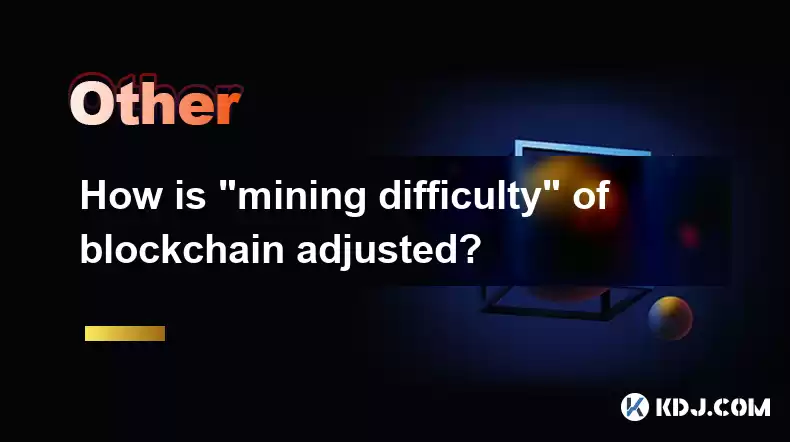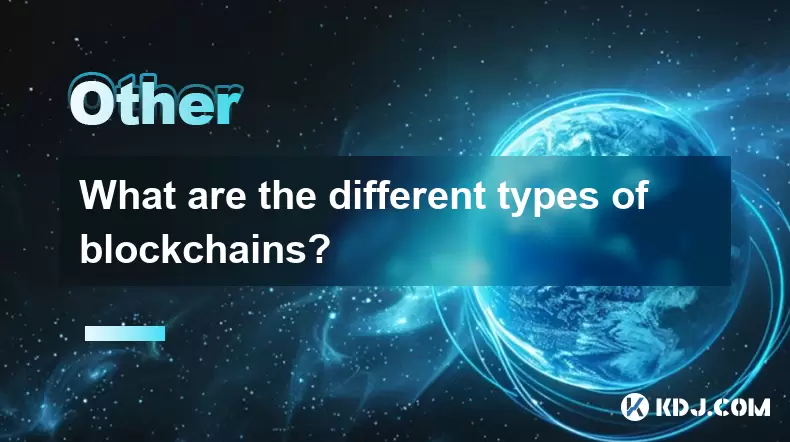-
 Bitcoin
Bitcoin $112400
-1.07% -
 Ethereum
Ethereum $3409
-3.27% -
 XRP
XRP $2.784
-6.60% -
 Tether USDt
Tether USDt $0.9997
-0.03% -
 BNB
BNB $739.3
-2.09% -
 Solana
Solana $158.0
-2.90% -
 USDC
USDC $0.9998
-0.02% -
 TRON
TRON $0.3213
-0.94% -
 Dogecoin
Dogecoin $0.1929
-5.01% -
 Cardano
Cardano $0.6974
-2.82% -
 Hyperliquid
Hyperliquid $36.69
-2.31% -
 Sui
Sui $3.327
-4.80% -
 Stellar
Stellar $0.3672
-5.18% -
 Chainlink
Chainlink $15.65
-3.07% -
 Bitcoin Cash
Bitcoin Cash $525.0
-1.68% -
 Hedera
Hedera $0.2291
-6.00% -
 Avalanche
Avalanche $20.91
-2.96% -
 Ethena USDe
Ethena USDe $1.000
0.00% -
 Toncoin
Toncoin $3.520
-1.12% -
 UNUS SED LEO
UNUS SED LEO $8.968
0.14% -
 Litecoin
Litecoin $105.7
0.26% -
 Shiba Inu
Shiba Inu $0.00001181
-1.79% -
 Polkadot
Polkadot $3.492
-2.08% -
 Uniswap
Uniswap $8.800
-3.10% -
 Dai
Dai $0.9999
-0.01% -
 Monero
Monero $289.9
-3.17% -
 Bitget Token
Bitget Token $4.243
-1.27% -
 Pepe
Pepe $0.00001006
-3.67% -
 Cronos
Cronos $0.1248
-5.68% -
 Aave
Aave $249.7
-2.50%
How is "mining difficulty" of blockchain adjusted?
Mining difficulty adjusts to maintain stable block times, ensuring blockchain security and influencing miner profitability based on network hash rate changes.
Mar 29, 2025 at 06:50 am

Understanding Blockchain Mining Difficulty
The mining difficulty of a blockchain is a crucial mechanism that maintains the security and stability of the network. It essentially represents how computationally difficult it is to successfully mine a new block and add it to the blockchain. This difficulty dynamically adjusts to ensure that new blocks are added at a relatively consistent rate, regardless of the overall network hash rate. This rate is pre-determined and hard-coded into the blockchain's protocol. A higher difficulty means more computational power is needed to solve the cryptographic puzzle and earn rewards.
The Purpose of Difficulty Adjustment
The primary purpose of adjusting mining difficulty is to maintain a stable block generation time. If the network hash rate (the total computational power dedicated to mining) increases significantly, blocks would be found too quickly. Conversely, a decrease in hash rate would lead to excessively long block times. Consistent block times are vital for the smooth operation of the blockchain, ensuring transaction confirmations occur within a predictable timeframe. This predictability is essential for the trust and usability of the cryptocurrency.
How the Adjustment Mechanism Works
The difficulty adjustment mechanism varies slightly depending on the specific blockchain protocol. However, the core principle remains the same: it uses a retrospective analysis of recent block generation times to determine the necessary adjustment. Most blockchains employ a periodic adjustment, meaning the difficulty is recalculated at regular intervals (e.g., every 2016 blocks for Bitcoin).
- Data Collection: The system tracks the time taken to mine a specific number of recent blocks.
- Target Calculation: Based on the target block generation time (e.g., 10 minutes for Bitcoin), the system calculates the difference between the actual time taken and the target time.
- Difficulty Adjustment: If blocks were mined too quickly (shorter than the target time), the difficulty is increased. If blocks were mined too slowly (longer than the target time), the difficulty is decreased. The adjustment is usually proportional to the difference in time.
- Implementation: The adjusted difficulty is then implemented in the next block mining cycle, affecting all miners on the network.
The Algorithm Behind the Adjustment
The exact algorithm used to calculate the difficulty adjustment varies across different blockchains. Bitcoin, for example, uses a formula that considers the time taken to mine a set number of blocks (typically 2016 blocks) and adjusts the difficulty proportionally. This formula is designed to be relatively simple and robust, providing a stable and predictable adjustment mechanism. Other cryptocurrencies may use more sophisticated algorithms, but the underlying principle of maintaining a consistent block generation time remains the same. Understanding the specific algorithm of your chosen cryptocurrency is crucial for a complete understanding of its mining dynamics.
Impact of Difficulty Adjustment on Miners
The difficulty adjustment directly impacts the profitability of mining. An increase in difficulty means miners need more computational power to solve the cryptographic puzzle, resulting in a lower probability of successfully mining a block. This can lead to reduced profitability, potentially discouraging some miners from participating. Conversely, a decrease in difficulty makes it easier to mine blocks, potentially increasing profitability and attracting more miners. This dynamic equilibrium is essential for maintaining a healthy and secure blockchain network.
Difficulty Adjustment and Network Security
The difficulty adjustment mechanism is crucial for maintaining the security of the blockchain. A stable block generation time helps prevent attacks such as 51% attacks, where a single entity controls more than half of the network's hash rate. If the difficulty adjustment were not in place, a sudden increase in hash rate by a malicious actor could lead to rapid block generation, potentially allowing them to manipulate the blockchain. The dynamic adjustment ensures that such attacks remain computationally infeasible.
Factors Affecting Mining Difficulty Beyond Hashrate
While the network hash rate is the primary driver of difficulty adjustments, other factors can indirectly influence it. These include:
- Miner Hardware Upgrades: The introduction of new, more powerful mining hardware can increase the overall network hash rate, leading to a difficulty increase.
- Electricity Prices: Fluctuations in electricity prices can impact the profitability of mining, influencing the number of active miners and thus the network hash rate.
- Cryptocurrency Price: The price of the cryptocurrency itself significantly impacts mining profitability. A price increase generally leads to increased mining activity and a subsequent difficulty increase.
Different Blockchains, Different Approaches
It's important to remember that different blockchains employ different difficulty adjustment mechanisms. While the core principle of maintaining a consistent block generation time remains the same, the specific algorithms and parameters can vary significantly. Researching the specific difficulty adjustment mechanism of a particular blockchain is vital for a thorough understanding of its operational characteristics.
Frequently Asked Questions
Q: What happens if the mining difficulty becomes too high?
A: If the mining difficulty becomes too high, it becomes less profitable for miners to participate. This can lead to a decrease in the network hash rate, eventually causing the difficulty to adjust downwards.
Q: Can the mining difficulty be manipulated?
A: No, the difficulty adjustment mechanism is designed to be decentralized and transparent. It's based on publicly available data and a pre-defined algorithm, making manipulation extremely difficult and practically impossible on a large scale.
Q: How often is the mining difficulty adjusted?
A: The frequency of difficulty adjustments varies depending on the blockchain. Bitcoin, for example, adjusts the difficulty approximately every two weeks (after every 2016 blocks). Other cryptocurrencies may have different adjustment periods.
Q: What is the relationship between mining difficulty and transaction fees?
A: While not directly linked, mining difficulty and transaction fees are indirectly related. High mining difficulty might lead to higher transaction fees as miners prioritize transactions with higher fees to maximize their profitability.
Q: How does the difficulty adjustment affect the security of the network?
A: The difficulty adjustment is crucial for maintaining the security of the network by ensuring a consistent block generation time, making it computationally infeasible for attackers to perform 51% attacks or other malicious activities.
Q: What are the implications of a sudden drop in mining difficulty?
A: A sudden drop in mining difficulty can lead to a surge in block creation, potentially causing temporary network instability. It also indicates a significant drop in the network's hash rate, which could be a cause for concern regarding the network's security.
Disclaimer:info@kdj.com
The information provided is not trading advice. kdj.com does not assume any responsibility for any investments made based on the information provided in this article. Cryptocurrencies are highly volatile and it is highly recommended that you invest with caution after thorough research!
If you believe that the content used on this website infringes your copyright, please contact us immediately (info@kdj.com) and we will delete it promptly.
- Grayscale, Altcoin Trust, and Mid-Cap Mania: What's the Deal?
- 2025-08-03 08:50:16
- XRP, ADA, and the Altcoin Evolution: What's Hot and What's Next
- 2025-08-03 08:30:16
- HBAR Price Check: Will Monthly Gains Hold at This Resistance Level?
- 2025-08-03 08:30:16
- Bitcoin, Cryptos, and Retirees: A New Era of Investment?
- 2025-08-03 08:50:16
- BlockDAG's Presale Power & Active Miners: A New York Minute on Crypto's Hottest Trend
- 2025-08-03 08:55:25
- BlockDAG Presale Heats Up: SUBBD Trails as Innovation Meets Execution
- 2025-08-03 09:00:16
Related knowledge

What is the difference between on-chain and off-chain transactions?
Aug 02,2025 at 04:22pm
Understanding On-Chain TransactionsOn-chain transactions refer to digital asset transfers that are recorded directly on a blockchain ledger. These tra...

What is the double-spending problem and how does blockchain prevent it?
Aug 02,2025 at 01:07pm
Understanding the Double-Spending ProblemThe double-spending problem is a fundamental challenge in digital currency systems where the same digital tok...

What is the difference between a blockchain and a database?
Aug 01,2025 at 09:36pm
Understanding the Core Structure of a BlockchainA blockchain is a decentralized digital ledger that records data in a series of immutable blocks linke...

How does blockchain handle scalability?
Aug 02,2025 at 02:58pm
Understanding Blockchain Scalability ChallengesBlockchain scalability refers to a network's ability to handle an increasing volume of transactions wit...

What are the different types of blockchains?
Aug 03,2025 at 03:01am
Public Blockchains: Open and Decentralized NetworksPublic blockchains are the most widely recognized type of blockchain, characterized by their open a...

What is a hash in a blockchain?
Aug 02,2025 at 05:28am
Understanding the Concept of Hash in BlockchainA hash in the context of blockchain technology refers to a unique digital fingerprint generated by a cr...

What is the difference between on-chain and off-chain transactions?
Aug 02,2025 at 04:22pm
Understanding On-Chain TransactionsOn-chain transactions refer to digital asset transfers that are recorded directly on a blockchain ledger. These tra...

What is the double-spending problem and how does blockchain prevent it?
Aug 02,2025 at 01:07pm
Understanding the Double-Spending ProblemThe double-spending problem is a fundamental challenge in digital currency systems where the same digital tok...

What is the difference between a blockchain and a database?
Aug 01,2025 at 09:36pm
Understanding the Core Structure of a BlockchainA blockchain is a decentralized digital ledger that records data in a series of immutable blocks linke...

How does blockchain handle scalability?
Aug 02,2025 at 02:58pm
Understanding Blockchain Scalability ChallengesBlockchain scalability refers to a network's ability to handle an increasing volume of transactions wit...

What are the different types of blockchains?
Aug 03,2025 at 03:01am
Public Blockchains: Open and Decentralized NetworksPublic blockchains are the most widely recognized type of blockchain, characterized by their open a...

What is a hash in a blockchain?
Aug 02,2025 at 05:28am
Understanding the Concept of Hash in BlockchainA hash in the context of blockchain technology refers to a unique digital fingerprint generated by a cr...
See all articles

























































































